Related Research Articles

Taunton Deane was a local government district with borough status in Somerset, England. Its council was based in Taunton.
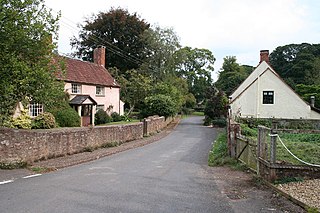
Combe Florey is a village and civil parish in Somerset, England, situated 6 miles (9.7 km) northwest of Taunton, on the West Somerset Railway. The village has a population of 261. The parish includes the hamlet of Eastcombe which is a linear settlement along the A358 Taunton-Wiliton Road.
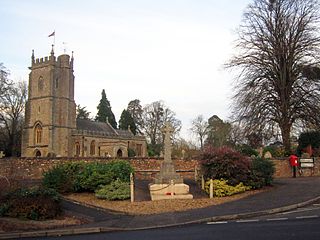
Bradford-on-Tone is a village and civil parish in Wellington, Somerset, England, situated on the River Tone 4 miles (6.4 km) south west of Taunton. The parish, which includes Tone Green and Hele, has a population of 622.

Fitzhead is a village and civil parish in Somerset, England, situated approximately 6 miles (9.7 km) north west of Taunton. The village has an estimated population of 264.

Lydeard St Lawrence or St Lawrence Lydiard is a village and civil parish in Somerset, England, situated 7 miles (11.3 km) north west of Taunton. The village has a population of 506. The parish includes the hamlets of Westowe, Hoccombe and Pyleigh, with its 16th century manor house.

Norton Fitzwarren is a village, electoral ward, and civil parish in Somerset, England, situated 2 miles (3.2 km) north west of Taunton. The village has a population of 3,046.

Nynehead is a village and civil parish in Somerset, England, situated on the River Tone, 7 miles (11 km) south-west of Taunton and 1.5 miles (2 km) north-west of Wellington. The village has a population of 415.

Oake is a village and civil parish in Somerset, England, situated 5 miles (8.0 km) west of Taunton. The village has a population of 765.

Orchard Portman is a village and civil parish in Somerset, England, situated 2 miles (3.2 km) south of Taunton. The village has a population of 150.

Sampford Arundel is a village and civil parish in Somerset, England. It is situated near Wellington and 10 miles (16.1 km) south west of Taunton. The village has a population of 268.

Stawley is a village and civil parish in Somerset, England, situated 10 miles (16.1 km) west of Taunton. The parish has a population of 279 and includes the village of Kittisford and the hamlets of Appley, Greenham and Tracebridge.
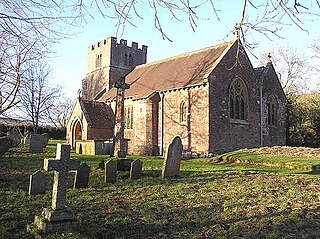
Tolland is a village and civil parish in Somerset, England, situated 9 miles (14.5 km) north west of Taunton, between the Brendon Hills and Quantock Hills. The parish has a population of 81.

West Buckland is a village and civil parish in Somerset, England, situated 5 miles (8.0 km) south west of Taunton. The parish has a population of 1,189.
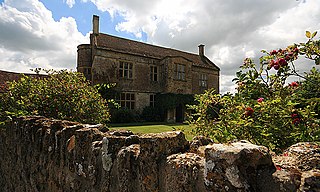
Charlton Horethorne is a village and civil parish in Somerset, England, situated five miles north-east of Sherborne and five miles south-west of Wincanton in the South Somerset district. The village has a population of 591. The parish also includes Stowell.
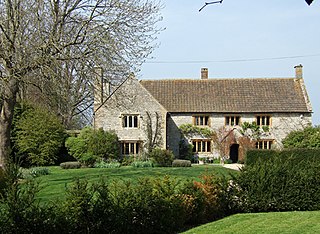
Rimpton is a village and civil parish 5 miles (8 km) north-west of Sherborne, and 6 miles (10 km) north-east of Yeovil on a tributary of the River Parret in the South Somerset district of Somerset, England.
The Hundred of Horethorne is one of the 40 historical Hundreds in the historic county of Somerset, England, dating from before the Norman conquest during the Anglo-Saxon era although exact dates are unknown. Each hundred had a 'fyrd', which acted as the local defence force and a court which was responsible for the maintenance of the frankpledge system. They also formed a unit for the collection of taxes. The role of the hundred court was described in the Dooms (laws) of King Edgar. The name of the hundred was normally that of its meeting-place.
The Hundred of Norton Ferris is one of the 40 historical Hundreds in the historic county of Somerset, England, dating from before the Norman conquest during the Anglo-Saxon era, although exact dates are unknown. Each hundred had a 'fyrd', which acted as the local defence force and a court which was responsible for the maintenance of the frankpledge system. They also formed a unit for the collection of taxes. The role of the hundred court was described in the Dooms (laws) of King Edgar. The name of the hundred was normally that of its meeting-place.
The Hundred of Pitney is one of the 40 historical Hundreds in the ceremonial county of Somerset, England, dating from before the Norman conquest during the Anglo-Saxon era although exact dates are unknown. Each hundred had a 'fyrd', which acted as the local defence force and a court which was responsible for the maintenance of the frankpledge system. They also formed a unit for the collection of taxes. The role of the hundred court was described in the Dooms (laws) of King Edgar. The name of the hundred was normally that of its meeting-place.

Taunton Deane was a local government district with borough status in Somerset, England. It merged with West Somerset to form Somerset West and Taunton on 1 April 2019. Its council was based in Taunton. The district was formed on 1 April 1974, under the Local Government Act 1972, by a merger of the Municipal Borough of Taunton, Wellington Urban District, Taunton Rural District, and Wellington Rural District. Taunton Deane was granted borough status in 1975, enabling the mayoralty of Taunton to be continued, when other districts did not have mayors. The district was given the name of an alternate form of the Taunton Deane Hundred.

Somerset West and Taunton was a local government district in Somerset, England, from 2019 to 2023. It was established on 1 April 2019 by the Somerset West and Taunton Order 2018. The council replaced the Taunton Deane and West Somerset councils, which governed the same area from 1974.
References
- ↑ "Administrative Units Typology | Status definition: Hundred". Vision of Britain. Retrieved 18 October 2011.
- ↑ "The Shire and the Hundred". Somerset County Council. Archived from the original on 14 August 2011. Retrieved 13 October 2011.
- ↑ "Summary". Institute of Archaeology. Archived from the original on 25 May 2010. Retrieved 15 October 2011.
- ↑ Youngs, Frederic A Jr. (1979). Guide to the Local Administrative Units of England, Vol.I: Southern England. London: Royal Historical Society. p. 670. ISBN 0-901050-67-9.
- ↑ "Horethorne Hundred". A History of the County of Somerset: Volume 7: Bruton, Horethorne and Norton Ferris Hundreds (1999), pp. 72-74. British History Online. Retrieved 4 January 2012.
- ↑ "County of Somerset. Table 4: Area, Houses and Population of the Hundreds". Census 1871. University of Essex . Retrieved 24 October 2011.
- ↑ Shorrocks, Derek. "A Guide to Tracing the History of Your House in the Somerset Record Office". Somerset County Council . Retrieved 21 October 2011.
- ↑ Mills, A. D. (2011). "Taunton Deane". A Dictionary of British Place Names. Oxford University Press. ISBN 978-0-19-173944-6.
- ↑ "About the Mayor". Taunton Deane Borough Council. Archived from the original on 6 June 2011. Retrieved 23 January 2010.
- ↑ County Courts Act 1867 (30 & 31 Vict. c. 142) s.28
- ↑ "Mapping the Hundreds of England and Wales in GIS". University of Cambridge Department of Geography. 6 June 2008. Retrieved 15 October 2011.